Weather can change rapidly in Antarctica. Be prepared. A sentiment that is often repeated in our many training sessions. It is said for good reason – it is true. I am five days into my time in Antarctica and today the weather did exactly that. It is Sunday here and the day after the big halloween bash, which I will journal about on Halloween, stay tuned for some epic photos! Sunday is a 'non-working' day and is often reserved for laundry, hiking, shopping excursions to Scott Base, hanging with friends in the coffee lounges or watching some New Zealand tv! Brunch starts at 10am. Our group's plan was to eat at 11 and head out for a hike to Scott Base at noon. We intended to bring our snowmobiles back to McMurdo so they would be ready to use on Wednesday on the sea ice. The hike is not far, a mile and a half, but uphill most of the way. It was snowing beautifully. A winter scene that would make you want to light a fire and drink hot cocoa!
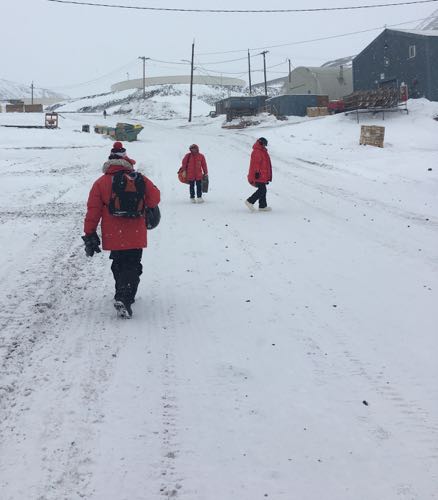 Our group, Drs. Xie and Gao, Todd Zadorski from IT and myself heading out on our 1.5 mile hike to New Zealand's Sott Base.
Our group, Drs. Xie and Gao, Todd Zadorski from IT and myself heading out on our 1.5 mile hike to New Zealand's Sott Base.
We departed at 12:30pm, not moving fast in getting our gas can and helmets. Our loads were not heavy, but wearing big red (Antarctic puffy down jackets issued to all of us) and boots over snow covered ice roads does not make for fast or easy travel. Visibility was not terrible and the temperature tolerable as there was little wind. We stopped to take pictures at the McMurdo sign and continued on our way to New Zealand's Scott Base. The base is all green. An odd site against the white background.
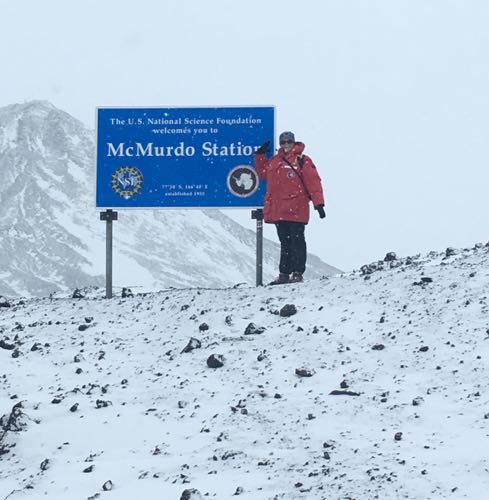 Dr. Xie took my picture at the welcome sign. Always good to take one of these!
Dr. Xie took my picture at the welcome sign. Always good to take one of these!
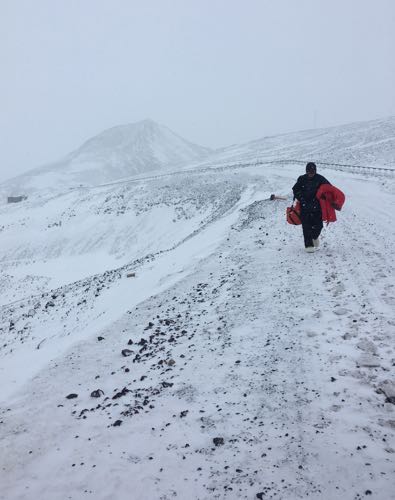 The journey to Scott Base is mostly uphill. This is looking back towards McMurdo, just around Observation Hill.
The journey to Scott Base is mostly uphill. This is looking back towards McMurdo, just around Observation Hill.
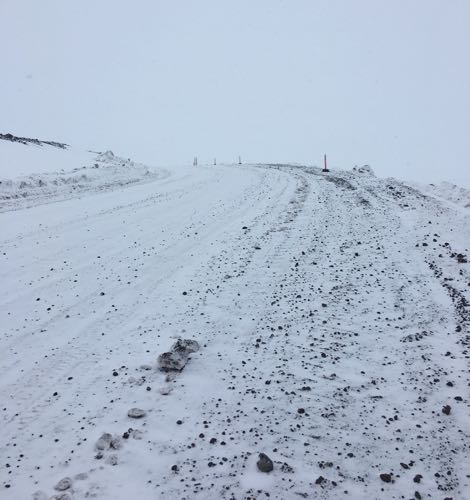 The walk to Scott Base shortcuts here. The road keeps going up, but we can turn down towards the base!
The walk to Scott Base shortcuts here. The road keeps going up, but we can turn down towards the base!
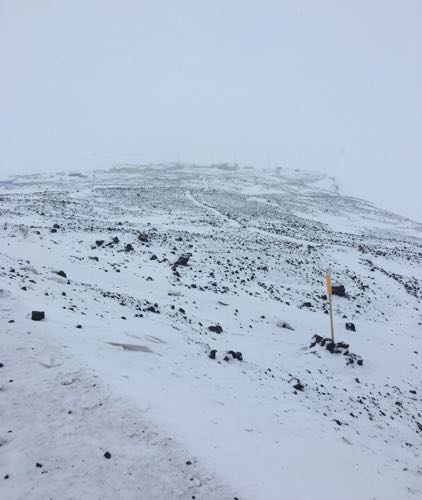 The rock path to Scott Base still pretty far away, visibility is still decent.
The rock path to Scott Base still pretty far away, visibility is still decent.
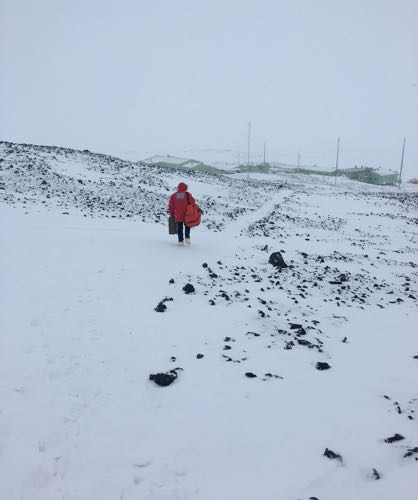 Walking down the trail to Scott Base.
Walking down the trail to Scott Base.
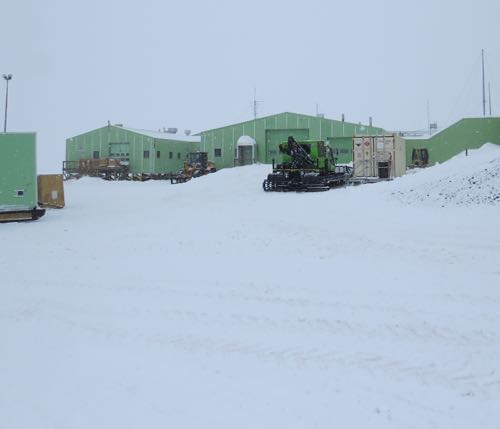 We have arrived at Scott Base!
We have arrived at Scott Base!
The ice was crumpled along the 'shoreline' where the sea ice meets up with the island. It creates interesting architecture and a beautiful blue hue as result of highly dense ice that bends the light as it shines through. Seals were out and about, and one appeared to have a pup. We located the store and made our purchases. We were in the store for no more than 30 minutes, but upon leaving, our view had changed considerably. We were in a virtual white-out. We contemplated the safety of driving the snowmobiles back to base. A NZ truck stopped us and asked if we need help, never a good sign! They commented that we had entered "condition 2" and might we need a ride back to McMurdo. We accepted, though disappointed not to be riding back on snowmobiles.
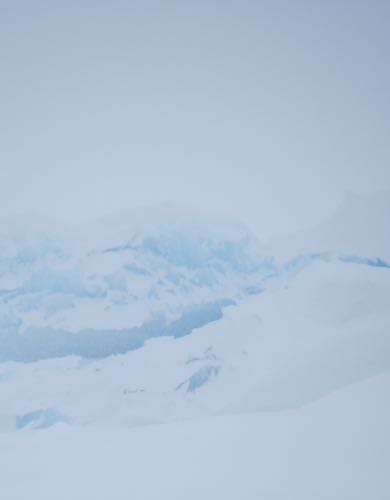 Blue Ice… so dense is this ice, it bends light and causes this beautiful blue hue.
Blue Ice… so dense is this ice, it bends light and causes this beautiful blue hue.
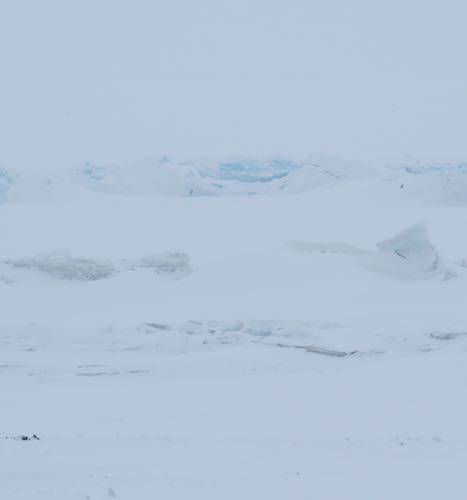 Sea ice crunched up against the shore of Ross Island just to the left of Scott Base
Sea ice crunched up against the shore of Ross Island just to the left of Scott Base
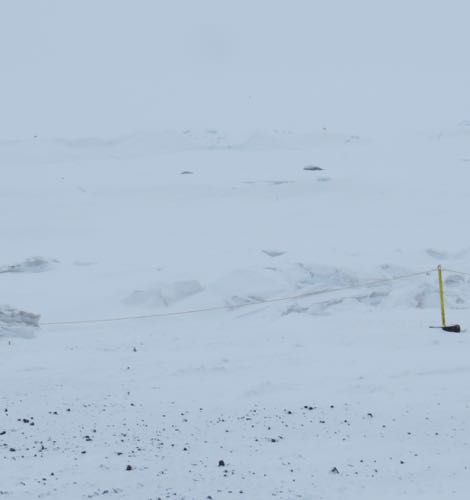 Seals out on the ice, several football fields away. Visibility is still pretty good.
Seals out on the ice, several football fields away. Visibility is still pretty good.
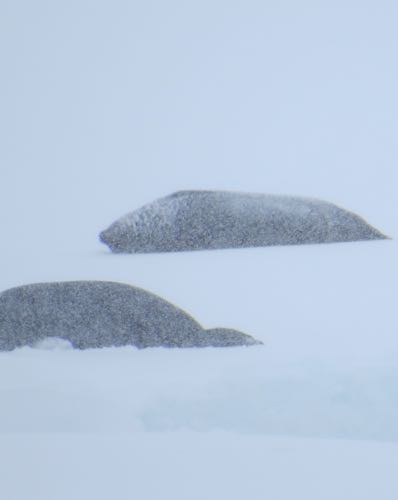 Seals close-up and it appears as though the front seal may have a pup.
Seals close-up and it appears as though the front seal may have a pup.
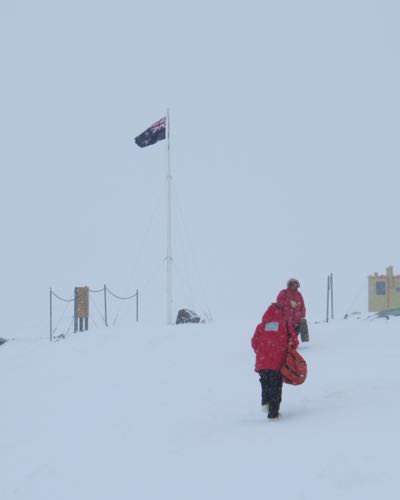 Scott Base flying its New Zealand flag. Wind is starting to pick up a bit.
Scott Base flying its New Zealand flag. Wind is starting to pick up a bit.
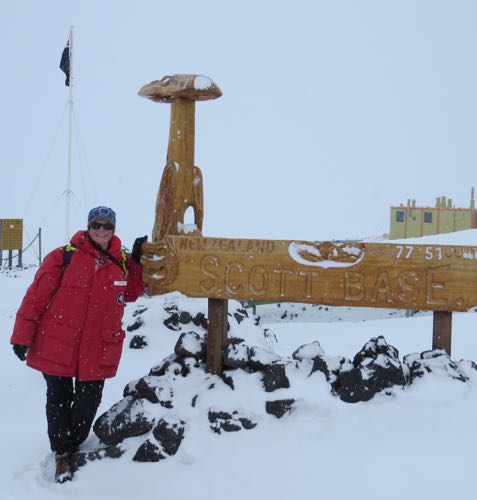 Sign at Scott Base deserved a picture too and Dr. Gao was kind enough to take it for me!
Sign at Scott Base deserved a picture too and Dr. Gao was kind enough to take it for me!
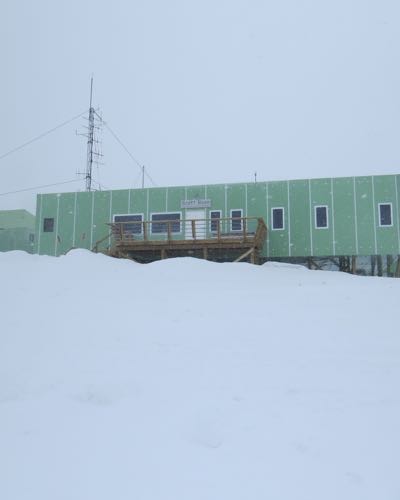 The store is inside this building at Scott Base. I also stamped my passport here!
The store is inside this building at Scott Base. I also stamped my passport here!
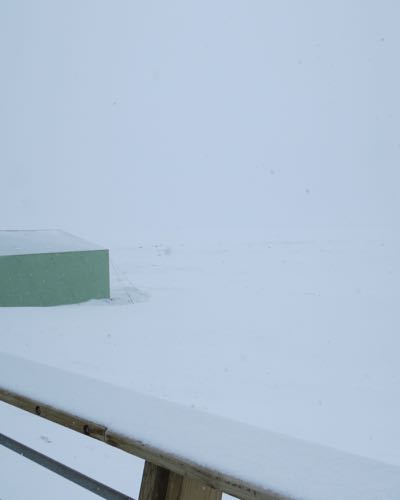 Looking out from the deck at Scott Base towards the seals… visibility has become limited.
Looking out from the deck at Scott Base towards the seals… visibility has become limited.
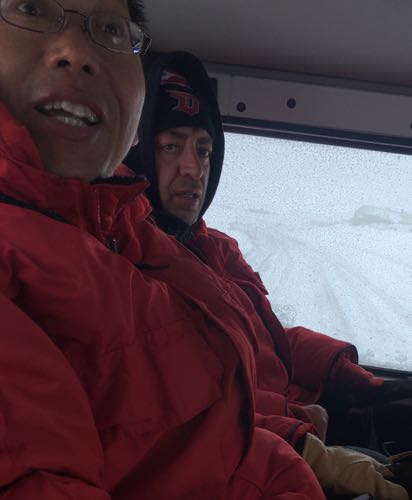 New Zealand's truck brought us back to McMurdo. A disappointing end to our trip, but definitely safer than riding in a white-out.
New Zealand's truck brought us back to McMurdo. A disappointing end to our trip, but definitely safer than riding in a white-out.
I think about this change in visibility and weather conditions in the short 30 minutes we were inside at Scott Base. Had we been out on the sea ice collecting samples, it is likely we may have had to build a camp and stay over night, not an ideal situation, but far safer than crossing on sea ice that is incredibly thin and dangerous this year. Weather is a big factor here and has grounded many flights and delayed much of the work that is normally accomplished by this time on the calendar. Challenges that are seemingly becoming more and more frequent on the frozen continent.
Perhaps some day, flat Lorax illustrators, Irelyn, a 1st grader and Maya, a senior, will be able to travel here too and experience this magnificent place and all of its challenges!
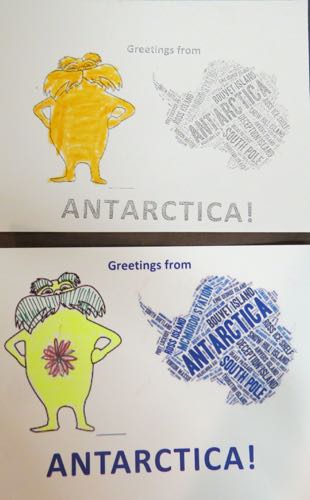 Flat Lorax postcards for Irelyn in 1st grade and Maya in APES!
Flat Lorax postcards for Irelyn in 1st grade and Maya in APES!

Comments
Add new comment